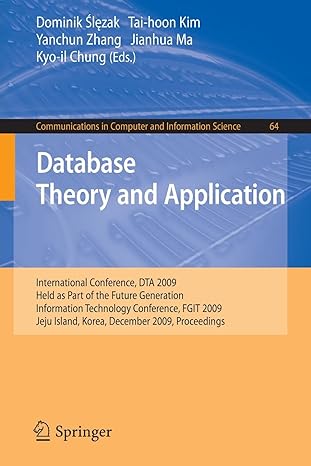Question
Create a function (in Python,latest version) called `addressbook` that takes as input two dictionaries, `name_to_phone` and `name_to_address`, and combines them into a single dictionary `address_to_all`
Create a function (in Python,latest version) called `addressbook` that takes as input two dictionaries, `name_to_phone` and `name_to_address`, and combines them into a single dictionary `address_to_all` that contains the phone number of, and the names of all the people who live at, a given address. Specifically, your function should:
1. Have input arguments `addressbook(name_to_phone, name_to_address)`, expecting `name_to_phone` as a dictionary mapping a name (string) to a home phone number (integer or string), and `name_to_address` as a dictionary mapping a name to an address (string).
2. Create a new dictionary `address_to_all` where the keys are all the addresses contained in `name_to_address`, and the value `address_to_all[address]` for `address` is of the format `([name1,name2,...], phone)`, with `[name1,name2,...]` being the list of names living at `address` and `phone` being the home phone number for `address`. **Note**: the *value* we want in this new dictionary is a *tuple*, where the first element of the tuple is a *list* of names, and the second element of the tuple is the phone number. (Remember that while a tuple itself is immutable, a list within a tuple can be changed dynamically.)
3. Handle the case where multiple people at the same address have different listed home phone numbers as follows: Keep the first number found, and print warning messages with the names of each person whose number was discarded.
4. Return `address_to_all`.
For example, typing in name_to_phone = {'alice': 5678982231, 'bob': '111-234-5678', 'christine': 5556412237, 'daniel': '959-201-3198', 'edward': 5678982231} name_to_address = {'alice': '11 hillview ave', 'bob': '25 arbor way', 'christine': '11 hillview ave', 'daniel': '180 ways court', 'edward': '11 hillview ave'} address_to_all = addressbook(name_to_phone, name_to_address) print(address_to_all) ```
should return
``` Warning: christine has a different number for 11 hillview ave than alice. Using the number for alice. {'11 hillview ave': (['alice', 'christine', 'edward'], 5678982231), '25 arbor way': (['bob'], '111-234-5678'), '180 ways court': (['daniel'], '959-201-3198')} ``` Your message should match exactly as shown above. If more than one person has a different phone number at the same address then use a `,` to separate the names.
Note that the specific order you get these elements back may not be the same, because sets and dictionaries do not preserve order. That is OK!
Please show code and explain how to do this. Thank you!
Step by Step Solution
There are 3 Steps involved in it
Step: 1

Get Instant Access to Expert-Tailored Solutions
See step-by-step solutions with expert insights and AI powered tools for academic success
Step: 2

Step: 3

Ace Your Homework with AI
Get the answers you need in no time with our AI-driven, step-by-step assistance
Get Started


